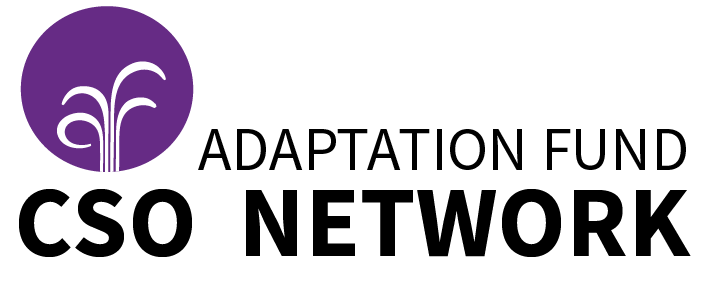Intersection of Food Security, Energy Consumption and Climate Change: Some Critical Issues
Introduction
As global temperatures rise, severe negative impacts on crop yields is expected in large parts of the Global South where food security remains a critical concern. Yet agriculture is also seen as a major greenhouse gas emitter – if landuse change is included, agriculture is said to contribute up to 30% of GHGs. Around 13% of global emissions come from agricultural practices themselves – in particular from methane and nitrous oxides.
The agriculture sector faces monumental adaptation challenges for the welfare of local communities, sustainable farming and food security. At the same time, solutions for agriculture mitigation are controversial at the UNFCCC –a key one being soil carbon sinks. While the Fourth IPCC report suggested that up to 90% of agriculture mitigation potential lay in the global South through soil carbon sequestration, studies since then have begun to look at feedback loops between rising temperatures and the ability of soils to store carbon. A study published this week (11 June) by the Woods Hole Research Center shows that as temperatures rise in temperate forests, more carbon dioxide will be released through soils. Other similar studies have been published by Nature. Yet, the World Bank as well as some key Annex 1 countries are moving towards developing soil carbon offset schemes with the hope of expanding the carbon market. Soil carbon offsets are being promoted as a “triple win” in sub-Saharan Africa for mitigation, adaptation and food security.
Finally, land and crops are also being used for energy production such as agrofuels, thereby replacing food production and also drastically changing supply of agriculture commodities for food. Second generation agrofuels also require biomass which remains a valuable resource for food production.
Issues to Consider
The steering committee is requested to examine the intersection of several key issues in order to set the agenda for the November meeting. The following 7 issues are points of departure for this exercise:
1. Mitigation in agriculture and the great transformation: How do we begin to reduce emissions from agriculture?
- There are ongoing debates about supporting a massive paradigm shift from industrial agriculture to low carbon, low-input and organic agricultural practices known as “agroecology” or “solar” agriculture that support small-scale agriculture and enhance biodivesity.
- At the same time, policymakers at the FAO and elsewhere are suggesting the notion of “sustainable intensification” – producing more from less i.e. a cow that produces more milk and more crops per unit of land. This brings to the fore debates about appropriate technologies and intellectual property i.e. the use of genetically modified crops, changing animal diets and impacts on animal welfare and bottom up approaches versus greater concentration of power in the hands of agribusiness.
- How do we set up a regime that directly targets the reduction of methane and nitrous oxides in agriculture production and at the same time empowers local communities to produce food and feed themselves and others?
2. Soil Carbon Sequestration as a mitigation solution and soil carbon offsets as an agriculture development finance solution?
- Assessing whether soil carbon projects are in effect a “triple win” as promoted by the World Bank and other policy makers
- And whether these offsets would deliver predictable and adequate finance to improve food production in developing countries
- What are the most appropriate financial mechanisms to transition to low-carbon, sustainable agriculture?
3. Agrofuels: Energy versus Food?
- It is now widely accepted that first generation agrofuels contributed to high and volatile agriculture prices and land grabbing with a shift towards land-based investments in energy as opposed to food production. What are the longterm consequences of the development of agrofuels, in particular, also the so-called second and third generation fuels?
4. Can addressing demand side factors tackle climate change and food security?
- Taking a look at meat consumption and production processes
- Waste in the food production process
- Counting the carbon footprint of food trade and longer value- chain
5. Financialisation of land, natural resources (payment for ecosystem services) and the role of financial speculators in food and commodity (including carbon) markets and its impact on food security?
- Examine the impact of such financialization on the food insecure and on food production
- Does PES lead to a cooler climate, better energy use, adequate finance?
- What impact does this have on food price volatility?
6. What does agriculture adaptation look like?
- How can it best be financed?
- What are key elements needed to ensure adaptation to a changing climate?
- What are the tradeoffs b/w a mitigation versus an adaptation approach with small farmers and what is the impact on food production?
7. How best to address/raise awareness of the impact on food security as a result of increasing temperature / lack of commitments?
- Lobell et al. amongst others predict temperature rise to have a significant impact on yields in sub-Saharan Africa and other places. Wheat yields could decrease by 40%. What are the consequences of these changes on food security?
- How best can the world transform the agriculture sector in light of this catastrophe?
- How can we as CSOs begin to convince policymakers that this remains one of the most critical reasons to reverse global warming?
Broader Issues of Concern:
i. How do we finance the great transformation to a low energy, low carbon pathway in agriculture and in the energy sector at large?
ii. Should we also discuss more specific question (e.g. special energy policies) or should we focus on questions that are related to the climate and food security together?
iii. Climate change will create climate refugees in the agrarian sector. How can migration be avoided (see adaptation point above) and how can cities be better planned to cope with such climate refugees?
iv. Can biogas be a viable energy alternative as well as fertilizer or will it lead to other problems?
